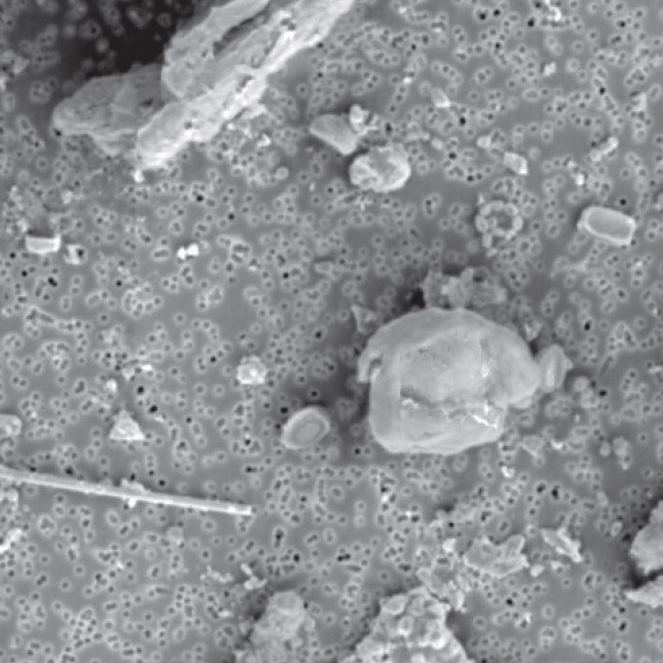ALS Scandinavia offers SEM-EDX analysis, we are currently operating two Scanning Electron Microscopes equipped with SE-, BSE- and EDX detectors. Scanning electron microscopes can be used in the same way as regular optical microscopes but with a much higher magnification. By adding an energy-dispersive detector (EDX) to the microscope, chemical information can be obtained from particles or surfaces. Analysis of pollutants in a sample helps to identify the source of those particles.
Particles can be sampled on tape (dust), special filters or they can be filtered from water or other liquids. Common to all types of SEM analysis is that only very small amounts of samples are needed to perform an analysis.
Fiber analysis using SEM
Analysis of different kinds of fibers, such as asbestos or ceramic fibers, is easy with SEM. Because of the high resolution we are able to detect smaller fibers compared to an analysis with phase contrast microscopy and with their chemical composition we can distinguish between different types of fibers.
Monitoring your production processes with SEM
Even small particles can be unwanted in your production process. With a SEM analysis we can help you identify different pollutants from the manufacturing process. This can help with the identification of the source of the pollutant.
Nanoparticles in air filters by SEM
The picture on the right shows nanoparticles that have been caught by an air filter. Both fibers and biological particles can be found on this filter. Many particles are smaller than 1 µm. Particles this small affects humans and with only chemical analysis much information would be lost.
Chemical analysis can help with the amount of different metals but not the compound they are a part of. SEM can do this and thus help to find the origin of the particle. Furthermore with SEM you can also recieve information about the nanoparticles composition, if they are larger than 0,2 µm. In the picture some of the pores of the filters has a diameter of 0,4 µm!


Chemical composition of electrical curcuit boards
The picture on the left shows the different distribution of metals on certain parts of a circuit board. Aluminum can only be found in association with silicon but silicon can be found in through-out the plastic parts as well. Bromine is only found in small amounts in the plastic but not in any component. Tin and calcium can only be found in certain components.